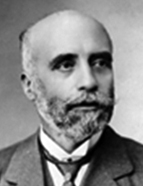

The publication of editions of ancient texts imbued with philological rigour and, to a lesser extent, literary studies are also particularly noteworthy. The fact that Leite de Vasconcelos himself contributed to the journal with most of the articles in almost all the afore-mentioned themes, with the exception of literary studies, is proof that the journal reflected his preferred research areas. Pedro de Azevedo, Carolina Michaëlis de Vasconcelos, José Joaquim Nunes and Cláudio Basto were some of the journal’s most regular collaborators. Foreign philologists such as Jules Cornu, Leo Spitzer, Wilhelm Meyer-Lübke, Wilhelm Storck and Max Leopold Wagner were occasional collaborators.
The O Arqueólogo Português, the official journal of the then Museu Etnográfico was published for the first time in 1895. Leite introduced it as a journal for those interested in archaeology, publishing descriptions of objects, archaeological sites, notes, sketches and photographs, biographies of archaeologists and museum-related news. Leite redacted the 30 volumes published until 1938 (1st series) and also authored most of their pages. The names of collaborators who also wrote for the Revista Lusitana (Pedro de Azevedo and José Joaquim Nunes) were among the collaborators of the O Arqueólogo Português, which is further proof of the contiguity between historical, ethnographical, and philological studies in areas such as palaeography and epigraphy. With a view to enhancing ethnographical studies, he also founded the Boletim de Etnografia [Ethnography Bulletin] (5 vols., 1920-1937), sponsored by the museum,
Leite de Vasconcelos strove to rapidly publish philological novelties and archaeological findings and to acquire valuable works for his museum. He frequently noted that he had been the first to publish on a given subject, with more and better information. As a result of this competitive spirit, he quarrelled with some of his contemporary archaeologists and linguists (see an example from his correspondence with archaeologist António dos Santos Rocha). In 1907, Rocha Peixoto, one of the writers of the Portugália (Porto, 1899-1908) journal, accused Leite of disseminating a biased view of Portuguese archaeology, by deliberately ignoring the work conducted by archaeologists close to the group of Portugália collaborators and overvaluing the work of the Museu Etnográfico.
The controversy surrounding Portuguese Language issues between Leite and António Cândido de Figueiredo (1846-1925) was fuelled by texts published in newspapers.
